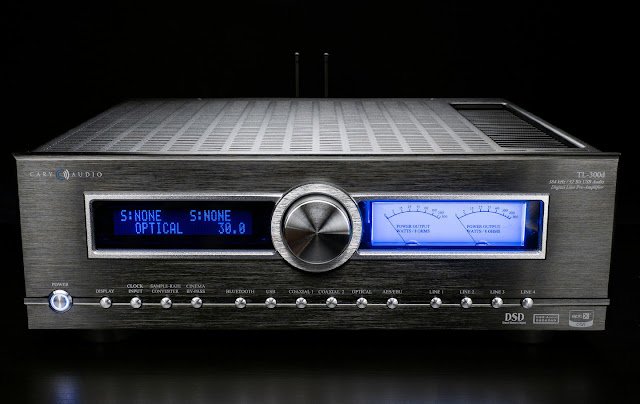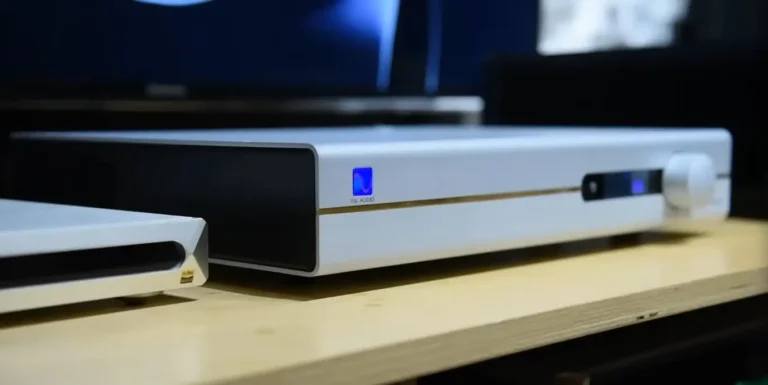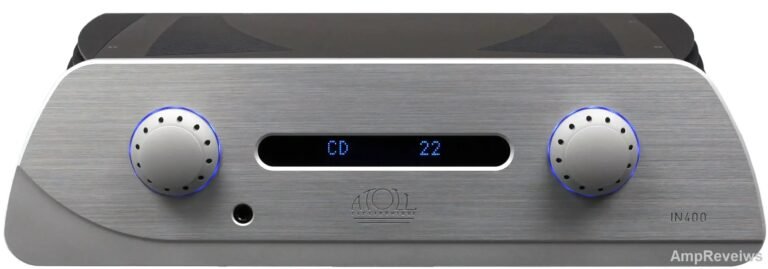Cary Audio SI-300.2d DAC Amplifier Review
The American company Cary Audio is already thirty years old, but it has remained a family business. And it is located in the same place – in the city of Cary, North Carolina. However, if we talk about manufactured equipment, growth is visible here. Today, the catalog is divided into two equal areas: tube and transistor amplifiers, as well as the production of digital sources, which has taken shape in an independent size, and very progressive ones.
Our experimental sample is both an amplifier and a source in one package. Now, many people do this, but it turns out differently. The first thing you notice while transporting and unpacking the Cary Audio SI-300.2d is that the device weighs quite decently, a little less than 24 kg. And in terms of dimensions, this is certainly not the smallest amplifier.
The cover of the user manual can be misleading – it says “Digital Integrated Amplifier”. But digital in this case is about the digital filling of the device, and not about the amplification class. Works Cary Audio SI-300.2d in the classic AB-class, it can deliver 300 watts per channel into an 8-ohm load.
Check Out: PS Audio Stellar Strata Review
The device is equipped with a linear power supply with a very large transformer, which accounts for a decent part of the total weight. By the way, immediately note that the amplifier is very noticeably heated. It is not worth putting it in a low rack or a closed volume.

The device is assembled in a steel case with an aluminum front panel, which can be black or silver. Buttons, volume knob – also aluminum, plastic is not visible at all. Appearance is utilitarian, without frills. And the fonts that indicate the controls are semi-antique. So the question of appearance is an amateur.
However, the only thing I want to find fault with is various logos like DSD and aptX. They are applied to the front panel – it seems that with the help of laser engraving. The absence of “noise” in the form of these inscriptions and logos would greatly benefit the appearance.
But the front panel of the device has one important feature. The bright blue indication is adjusted by several steps to a moderately bright setting, or you can even choose such a mode when almost all the indications go out after a few seconds. This is very good.
I had a demo copy on the test, in which the third button on the left on the front panel is designated as Clock Input, which this device does not have at all, and functionally, this button performs the Mute function.
The remaining buttons do not raise questions and are in their places, the remote control is also there, and quite convenient. And some things can be done through the application for the tablet.
Inputs And Outputs
Switching to Cary Audio SI-300.2d seemed to me thoughtful and convenient. Four line inputs – a pair of balanced and unbalanced. In this case, one of the balanced inputs and one of the unbalanced inputs can be configured for a through channel to use a cinema multi-channel scheme.
A pair of unbalanced pre-outs that can also be used to drive subwoofers. Digital inputs are also in abundance: there are AES / EBU, a pair of coax, optics, and USB. All inputs except USB are 24-bit/192kHz, while USB supports up to 24-bit/384kHz and DSD 64-256.
For most cases, this switching is enough: you can use several digital sources – for example, a computer and disk transport – plus a few analog ones. So the integration of Cary Audio SI-300.2d does not look complicated at all – everything is thought out here.
A feature that I would pay attention to is the connection of speaker cables. If you use spatulas, the cable will go up from the connector, and the acoustic terminals are already located in the upper part of the case. In addition, bending the cable will not always be appropriate.
And you can’t turn the cable down – there are analog input connectors, and the terminals limit such a turn. So in this case, an acoustic cable cut with “bananas” seems to be a preferable option.
You May Like: Technics SU-G700 Amplifier Review
Inside Look
Let’s take a look inside the device. Here, the division is about thirds. A third is occupied by the transformer and power supply, another third is the continuation of the power supply, the preamplifier circuit, and the digital source, and another third is the power amplifier heatsink, battery, and the power amplifier circuit itself.

The element base is decent but with a bit of heterogeneity. Separate elements of the circuit are spaced apart on different boards – they are not very tightly located and are installed without additional shielding.
The built-in DAC is based on the Asahi Kasei AK4490EQ chip. DAC of our design, not a third-party OEM. Interestingly, the manufacturer has declared its own TruBit upsampling scheme, which allows you to convert all input data to DSD.
As well as OSO’s reclocking scheme, which was also used for the USB input. The built-in DAC looks quite full-fledged both in terms of switching and in terms of the declared parameters.
As for additional features, there are Bluetooth v 4.0 and aptX. If this type of connection is necessary, it is quite possible to use it, and I did not find any difficulties here or pairing that falls off regularly.
To control the device, the possibilities are more than average. For example, you can use a regular built-in IR sensor, you can connect it separately via a connector on the rear panel, or you can use both. A trifle, but convenient.
However, IR control now does not seem to be such a necessity as it used to be. More familiar in our time will be network control: Cary Audio offers both wireless and wired connections. The app for iOS and Android can be found in the respective directories.
However, all network settings will have to be entered from the remote control, because without a network connection, the application will not recognize the amplifier. You only need to do this once, then everything works stably.
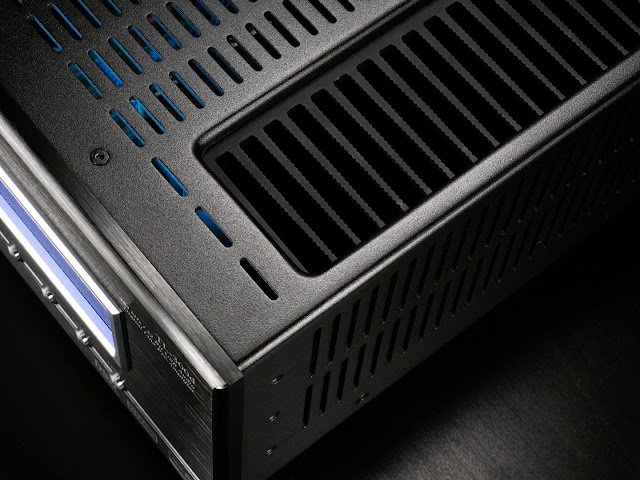
The application is not too complicated and feature-rich, but all the basic functions are there. The device’s settings are so logical that after you go through them once, only the volume and input switching will remain. Well, turn on/off. And also deals with upsampling – how much you need it and how often you want to switch it.
Testing: Power, Pairing, and Playback
The device stayed with me on the test for several weeks, and I tried it in a variety of combinations. The first thing that pleased: the amplifier did not have to look for “simpler acoustics” – everything is very good with the power and current output of the device.
The second point is that although the amplifier undoubtedly has its style, third-party devices paired with it are audible and recognizable. For example, I happened to have a good old multi-bit DAC – and it was not difficult to recognize it in this bundle.
The SI-300.2d has a signature style that adds character to the sound. But it doesn’t blur everything else. And in general, compatibility with other components, as it seemed to me, is not conflicting in nature.
Of course, I did the main test in tandem with the built-in DAC – after all, it is very likely that it will be used. And then something upset me a little.
All USB input options, including DSD 256, apply to combinations with the Windows operating system. Only the driver needs to be installed, and then everything is as stated. On MacOS, no drivers are needed, but here we run into the availability of only DoP – and no higher than 128.
In principle, I don’t have too many DSD recordings, but from my previous experience with many different devices, when choosing native DSD and DoP, I will often choose native playback. And TruBit upsampling on the USB input doesn’t work – it’s only for the other inputs.

Of course, I listened to how disk transport plays in conjunction with the upsampler, and about USB, I used the rule for all tested software – no upsampling, everything will play natively. This means that you can listen once and not switch on the fly. And if so, I applied another rule when listening: everything superfluous that can be turned off must be turned off.
In life, I do without remotes at all, and in this case, I did without an application on the tablet. Although it is quite able to replace the remote control. So I turn off the wired and wireless networks and the amplifier display. I did not find the ability to turn off Bluetooth, so let’s leave it as it is. And the main listening is still using a computer as a source, connected via a USB input.
Proportions
I put Diana Krall’s album “The Look Of Love”, just in the form of a DSD source, accordingly, I listened in DoP mode. The difference between hi-res and the same one in 16/44 is very audible.
I can immediately note that the sound does not act like a sleeping pill for me, and in most cases, it happens that way. And I keep this album for testing more because of its popularity, and not because I like the album. But in the case of Cary Audio, everything is not bad.
Also Read: Aris THE 30 tube integrated amplifier Review
There is energy and fullness, a very decent scale with the right proportions. Percussion sounds good, even quiet tertiary sounds have physicality and volume. The mids seem to be slightly raised, but the vocals don’t look exaggerated in scale. Everything is somehow in its place, natural and alive.
Feeding on HF is liked separately. It is rich, varied, and colorful, but not loud at all. In general, there is some tendency of the device to play with large strokes, but the whole picture turns out to be quite organic, with a foldable taste and sound style.
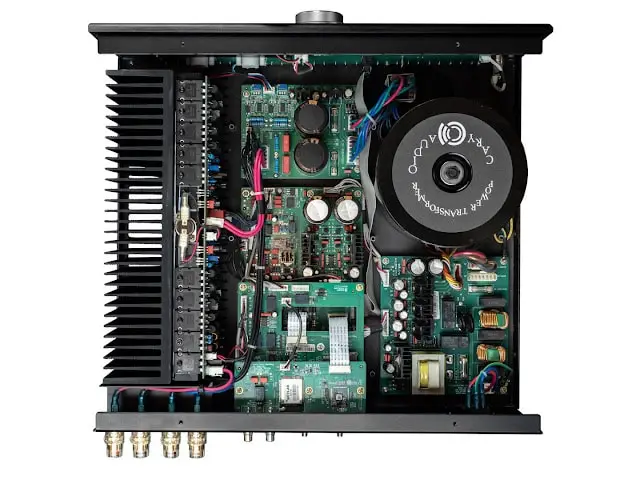
The feeling of tangibility is complemented by good microdynamics and articulation. Along the way, you can note a certain amount of warmth. It even looks a bit like a lamp, although there is nothing lamplike in the path. This warmth is not pretentious, but quite interesting, without accentuated softening and lethargy.
Just the combination of a moderate amount of warmth, good, rich energy, and the mobility of sound already creates a certain recognizable signature of its own. The rhythm can be neat and even gentle, if it is on the record, or it can be quite shock-rapid. But without harshness. The sound is not cold or sharp at all. And not stupid, although “large”.
With a marked, but moderate warmth and roundness, the sound is not sleepy. It is not boring with him; there is no feeling of forcedness in him. In detail, the presentation is a little simpler, although, in comparison with many other options, no simplicity will be noticeable.
The next entry is Julee Cruise’s “Floating Into The Night”. The volume is transmitted perfectly, from bass to treble, and everything is in proportion. The nuance is also not bad in general, but some parts sound slightly simplified, or rather, a little more formal. However, if you do not go into details, then everything is readable, nothing falls out of the overall picture, and there is no hint of some kind of mess or lethargy.
And the nuances are almost at the level of the air between the sounds, where the picture is slightly sparse. But all this needs to be constantly monitored, and our experimental apparatus is not very conducive to “sound digging” – it is more interesting for it to play a large-scale, quite lively and colorful picture, fill everything with volume, and not deprive the listener of emotions.
Then he put on the album Bersarin Quartett “Methoden Und Maschinen”. It turned out in detail, moderately airy, and confident in dynamics. In general, the sound is somehow very human, corporal – perhaps, for this album, it would be appropriate to add a little coolness and detachment. But our test subject is not to our liking.
There is a scale and volume; emotional involvement is also clearly present. The serving as a whole turned out to be warmer and a little softer than usual. But without a significant loss of information content. Although I would like a little more air, the atmosphere is lighter, less dense.
It is in the nuances of the air, in those sounds that are almost inaudible, that a certain lack is felt. However, this is also a matter of taste – for some, just such a sound will seem closer and more alive.
Density
Another record from a completely different genre is Marilyn Manson’s “We Are Chaos”. With rhythm and intelligibility, everything is fine, the sound is not at all sluggish, but not sharp in an obvious form. There is volume, and everything is not bad with bass – perhaps there is even surprisingly much of it here. Quantitatively and qualitatively, it is quite diverse. Although, like the rest of the range, without sharpness.
The specifics of the recording and the style of sound can be heard well, but the emphasis here is not on these components, but rather just on the music. It is interesting to listen, although sometimes there is a little lack of detail and harmony. But there are a lot of emotions, they are not simplified, not compressed, and do not tire at all. In general, very good.
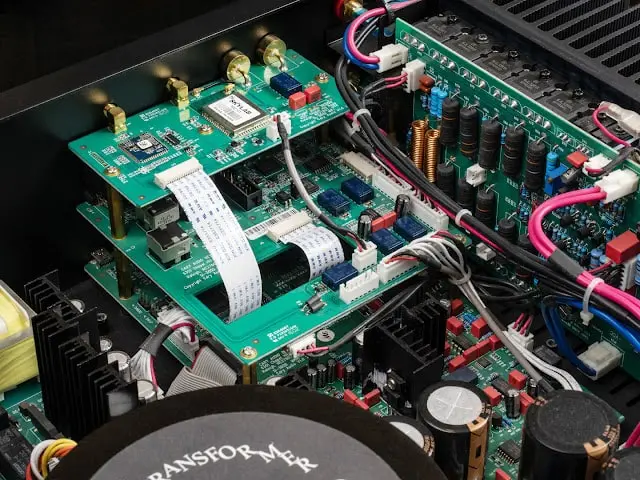
Then I turned on Keb’ Mo’ “Oklahoma”. The device plays the rhythm and volume very well, even at a low volume. This dense texture of sound, speed, and tangibility may appeal to many. Separately, I will mention that I liked the vocal parts, in almost all the parameters by which they can be evaluated.
And, of course, emotionality is present in due measure. During the entire listening, I had the feeling that somewhere in the circuit there was still something tube, and from a lamp of quite decent quality.
And finally, some classical music. Performance of Wagner’s Tannhäuser. In the example of this recording, the coloring is a little more noticeable, but there is no porridge even on complex fragments, except for a slight simplification of timbres.
A large-scale scene, good depth and volume, good localization of instruments – all this is present. But in general, everything is a little softer. The presentation is detailed, emotional, and open to the listener. Nothing more to complain about.
It was on this and a couple of similar recordings that I tried to experiment with upsampling. For example, it can be used for disk transport. I preferred the option with the upper PCM values more, and the option with recalculation in DSD seemed somewhat emphasized and softened, but not as detailed as native high-res could be. However, this is more a matter of personal preference, and it is better to experiment with upsampling settings in your system.
Price and availability
Official CaryDirect site lists it at:
- Retail: $6,495
- Factory Direct: $4,871
- Sale price: $3,897
Conclusion
A device with a charismatic, moderately bright sound, categorically not prone to coldness, detachment, or miniaturization of sound. Moderately old school, but without busting in the direction of color or softness. Transistor, but with a hint of a tube.
In genre, he coped with almost everything in the same way. Lively, provocatively, and, in principle, quite honestly. In addition, this is a very powerful amplifier, for which it is not necessary to select especially light acoustics.
The digital source onboard seemed more interesting to me than many external options in a certain range. If we consider a source comparable to at least half the cost of this entire device, there are options, but some consistency will still have to be looked for, and it is present in the database.
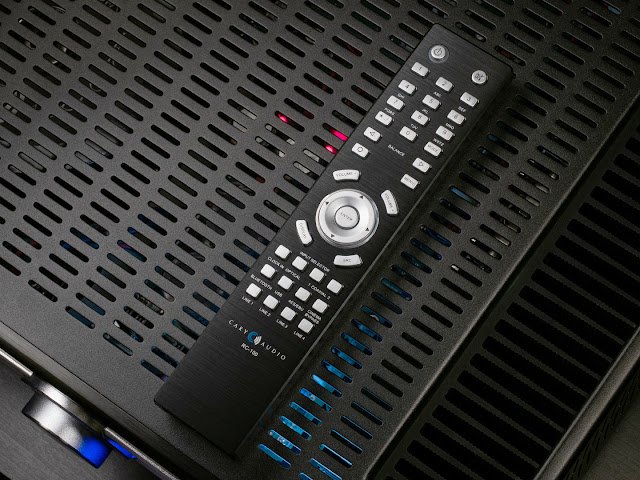
Musical Material While Testing
Bersarin Quartett – Methoden Und Maschinen Denovali Records – DEN323 / FLAC 24bit
Diana Krall – The Look Of Love / Verve XUNI3869D64 DSD 64
Julee Cruise – Floating Into The Night / Warner Bros. Records – 925 859-2 / CD-rip
Keb’ Mo’ – Oklahoma / Concord Records / Tidal
Marilyn Manson – We Are Chaos / Loma Vista – LVR01139 / CD rip
Wagner – Tannhäuser (Paris Version) Vienna Philharmonic Orchestra, Georg Solti / Decca / Tidal
Cary Audio SI-300.2d Specifications
Type: transistor, class AB
Power:
2 x 300W RMS / 8 ohms, 20Hz – 20kHz; 2 x 450W RMS / 4 ohm 20Hz – 20kHz
Frequency response: 10 Hz – 50 kHz ±0.1 dB
THD: < 0.5%
Signal-to-noise ratio: >100 dB
Line inputs, input impedance: 2 x RCA – 2 (10 kOhm), 2 x XLR – 2 (20 kOhm)
Line outputs: 2 x RCA – 1
DAC: 2-channel AK4490EQ
Digital inputs: USB, Toslink, Coaxial x 2, AES/EBU
Characteristics of digital inputs:
Coaxial, Toslink, AES/EBU: 44.1-192kHz / 16-24bit
USB: 44.1-384 kHz / 16-32 bit, DSD 64-256 (OS X – up to 24 bit, and up to DoP128)
Wireless connections: Bluetooth v 4.0, aptX, Wi-Fi 802.11 b/g/n
Digital outputs: Toslink, Coaxial
Control switching: Ethernet RJ45, 12V trigger, external IR sensor port
Power consumption: 950 W (at a load of 4 ohms)
Dimensions (WxHxD): 438x152x457 mm

